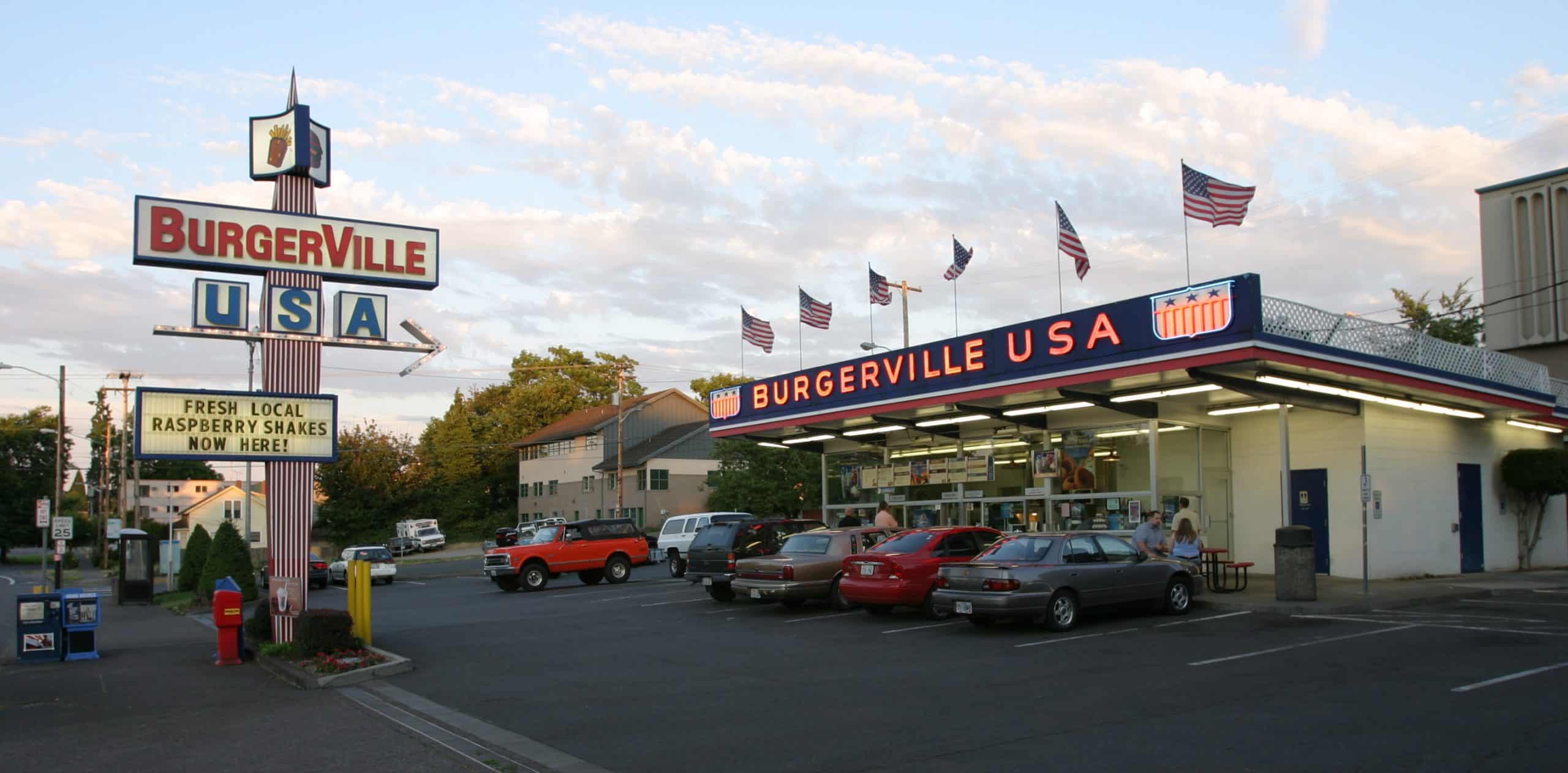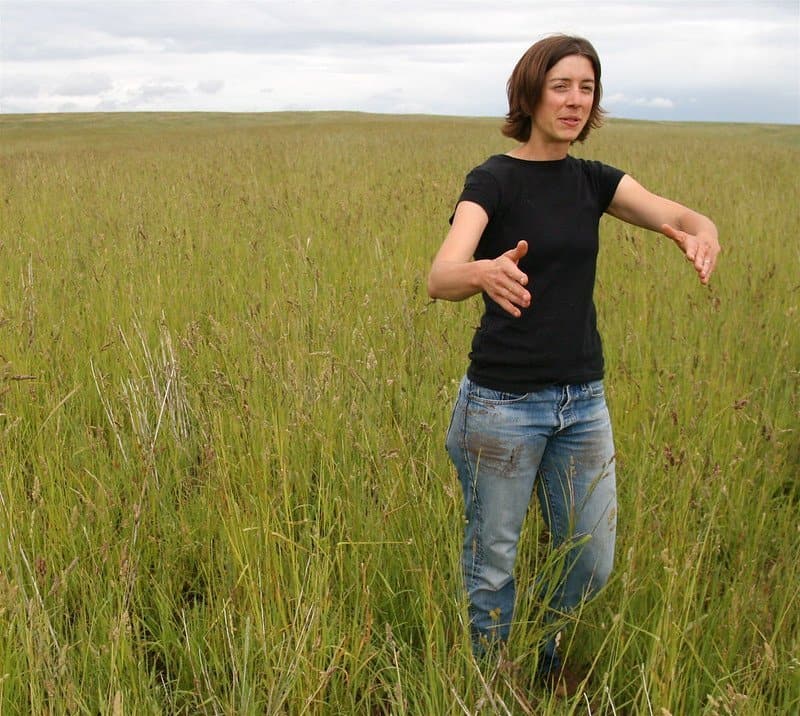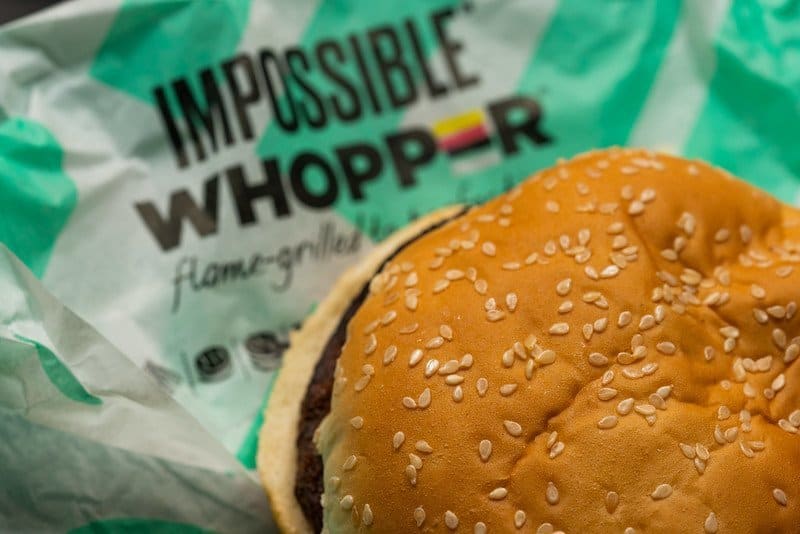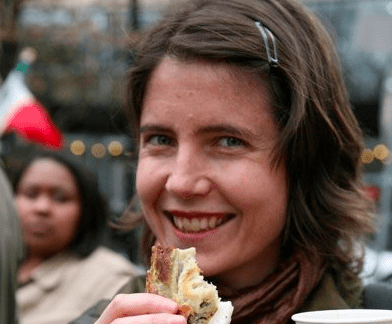Everyone from Miley Cyrus to Trevor Noah is raving about the Impossible Burger, the vegan beef with the trademark “bleed” that debuted in 2016. It’s one of a handful of plant-based meats that have surged in popularity on claims that they can “drastically reduce humanity’s destructive impact on the global environment,” as Impossible Foods CEO Pat Brown has put it.
But what if there’s another, earth-friendlier option? What if a juice-dripping burger from an actual cow could be better for the planet than vegan-but-you’d-never-know-it imitation meat? A few burger chains are tacitly suggesting as much, offering real beef burgers that, by some measures, are more sustainable, and show how farming, done correctly, can be good for the earth.
Carbon-negative beef
Burgerville, a 60-year-old fast-food chain in the Pacific Northwest, launched the No. 6 Burger in September, so named for the sixth element in the periodic table, carbon. The No. 6 is a lesson in regenerative agriculture, a holistic land management practice that reverses climate change by rebuilding soil’s organic matter and restoring its biodiversity.

The 100-percent grass-fed beef burger is from Carman Ranch, which practices rotational grazing on pasture, sequestering carbon back into the soil. (More on that later.) The brioche bun is baked at Grand Central Bakery from wheat grown on two Northwest farms (Small’s Family Farm and Camas Country Mill) that practice minimum tillage, which prevents erosion and carbon loss. And the aged cheddar melted atop is from Face Rock Creamery, which works with small-scale dairies within 15 miles of its facility. Every one of these enterprises is based in Oregon or Washington. The burger is currently sold at nine of Burgerville’s 41 locations. (It was slated to roll out at 16 additional locations in March, but then the coronavirus pandemic hit.)
“Soil health is the core principle of what we do,” says Cory Carman, the 40-year-old owner of Carman Ranch. The pasture at Carman Ranch is rich with deeply rooted perennial grasses and nutrient-dense cover crops like winter pea, oats, sunflowers and a brassica mix—all plants that feed soil microbes as well as the cattle, eliminating the need for trucking in carbon-reliant feed like corn. The cattle are rotated on pasture and cycle the nutrients through their bodies, nourishing the soil with their manure, which in turn feeds the next cover crop. After they graze, that area is left fallow for as long as a year so it can regenerate. Crucially, the grasses and cover crops that the cattle munch on also pull carbon from the atmosphere and store it in the soil.
Though Carman doesn’t have funding to test how deep a carbon sink her grazeland is, other ranches that practice regenerative grazing have. White Oak Pastures, a Bluffton, Georgia-based farm, recently had an outside firm conduct a “Life Cycle Assessment” of its rotationally grazed beef. The results show that the operation produces a net total of negative-3.5 kilograms of carbon emissions for every kilogram of beef produced. In other words, the cattle of White Oak Pastures have a net-negative impact on the environment—the very process by which they’re raised reduces climate change.
A partnership, rare and well done
Back in 2017, before the No. 6 Burger was on their menu, a few Burgerville executives visited Carman on her family’s ranch in Wallowa County, Oregon. The company wanted to put its money where its values were—fostering a more resilient regional supply chain. But the executives were wary, in part, because of the premium price that Carman Ranch beef commands.

Carman convinced them that supporting her ranch would help bring the operation to scale, allowing her to lower her prices —a virtuous cycle of its own. “I told them, ‘Listen, if you want us to scale up so we can become one of your suppliers eventually, you can’t just sit around!’” she recalls. The Burgerville execs agreed, and committed to making the ranch’s grass-fed beef about seven percent of the beef in all their burgers.
The partnership worked. Burgerville’s commitment to buying a steady weekly volume allowed Carman to scale up, doubling the ranch’s production from 20 head of cattle a week to 40. Today, the Carman Ranch beef Burgerville buys goes first to the No. 6 Burger, and if anything is leftover, they’ll use it in the grind for the regular burgers. (The chain uses Country Natural Beef, which is grass-fed and corn finished, for its other burgers.) And even though the coronavirus pandemic shuttered all Burgerville restaurants to dine-in customers (38 remain open for drive-through or delivery business), they’ve stuck by their weekly order from Carman Ranch.
Despite its $8 price tag — several dollars more than Burgerville’s $5.39 Northwest Cheeseburger — the No. 6 has been a hit. “I thought there was going to be all this pushback on pricing, but there wasn’t,” says Michelle Battista, the chain’s senior vice president for brand and marketing. From September to April 5, Burgerville sold nearly 50,000 No. 6 Burgers, nearly 14 percent of the company’s quarter-pounder burger sales.
Impossible in nature
The No. 6 Burger is a story of long-game sustainability, in which shared risk and commitment lead to scaled-up carbon-negative farming.
The Impossible Burger’s story is different. A Silicon Valley food-tech triumph, its genetically engineered soy-based “heme” compound (the part that makes it “bleed”) has won over even un-woke fast food chains like Burger King and White Castle. But as critics like Anna Lappé, author of Diet for a Hot Planet, have pointed out, the company’s reliance on genetically modified soy is problematic in ways that have nothing to do with animal rights.

GM soy is genetically engineered so that it can be sprayed with Bayer-Monsanto’s glyphosate-based herbicide Roundup. Not only has glyphosate use been linked to the decline in honeybee and monarch butterfly populations, it has been classified by the World Health Organization as a probable carcinogen. The company’s reliance on a monoculture crop — genetically modified soy — also perpetuates one of the worst aspects of the industrial food system. Growing one crop year in and year out degrades the soil and contributes to erosion — because there are no cover crops to keep the soil in place — and also requires chemical fertilizers and other fossil fuels to harvest and transport. According to the World Food LCA Database, soybeans have a footprint of two kilograms of carbon for every kilogram of beans produced.
Rachel Konrad, the chief communications officer at Impossible Foods, says that the company routinely scans for pesticides and herbicides and that there is no glyphosate in the Impossible Burger (though she did not deny that glyphosate is used on GM soy crops). She also disputed that relying on soy would perpetuate a monocultural food system, saying, “Animal agriculture is the No. 1 reason we’ve developed dangerous, biodiversity-killing monocultures… For what it’s worth, if you want to avoid soy for some reason, then you must eliminate animal products from your diet since livestock consumes the vast majority of all soy.” This is entirely true of the cheap feedlot beef raised in America, which is what most fast-food chains depend on. However, it is not true of ranches, like Carman’s, that practice regenerative agriculture, since their cattle is grazed on only pasture; they never eat soy or corn.
There is also the question of whether heme, made from fermenting a genetically engineered yeast, is safe to eat. Konrad cites conclusions from the U.S. FDA and third-party food safety scientists “that the heme in the Impossible Burger is totally safe to eat.” But organizations like the Center for Food Safety and Moms Across America argue that we don’t really know, since this is the first time humans have ever consumed this unique lab-made form of heme.
But the biggest impact of these products may be how quickly they have shifted focus away from more sustainable methods of farming and toward tech-based solutions instead. Before fake meat made a splash, at least one fast-food chain had just begun committing to more sustainably raised beef. In 2015, Carl’s Jr. introduced an antibiotic-free burger sourced from free range, grass-fed cattle. It’s no longer on the menu — now the chain sells the Beyond Burger instead.
While some regional chains like Elevation and Bareburger have continued to source grass-fed beef from smaller family-run farms, most are still sourcing their beef from confined animal feeding lots, which are devastating for the environment, horrific for the animals and not great for human health. (Cows evolved to eat grass, not corn, which tends to make them sick). This, at least, is something that Impossible CEO Brown and proponents of regenerative agriculture agree on: our addiction to cheap feedlot beef is harming the planet.
Burgerville’s business has been crucial to Carman Ranch’s growth. But more important than revenue, the chain has given Cory Carman — and the other farmers behind the No. 6 burger — a chance to share her mission with the wider world. “We want to get the message out: Why should you pay a premium for grass-fed beef? Why is our species dependent on the health of the soil?” She, like other practitioners of regenerative agriculture, is concerned that lab-based meat perpetuates monocultures. “The integration of animals, in some way, is critical to all ecological systems,” she says.
The benefits of regenerative agriculture are complex, but once customers are educated, says Battista, they’re on board. “As a marketplace, we got people to grass fed,” she says. “We got people to see the difference between grass-fed and conventional feedlot beef. And people are like, ‘Yeah, I get it!’ And they connect the dots back to their own health and wellness.”









